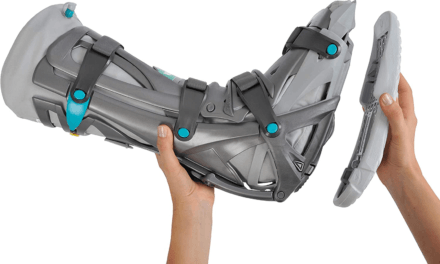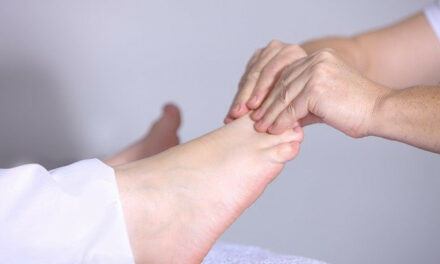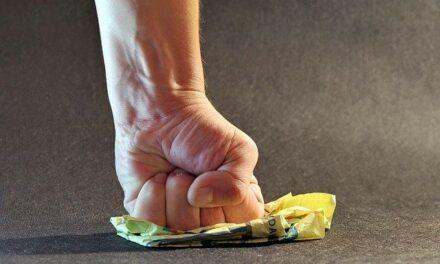Some people have speculations on whether warts and calluses are the same ‘things’. They also often tend to misidentify warts from calluses. They both appear the same, but they have slight differences. Their causes differ greatly. But that’s not all. So, what is the difference between calluses and warts will be mainly discussed in this article. And, then, how common are they among people with diabetes?
Those question and many more questions interest to you will be covered in this article.
Let’s start rolling by defining what actually is a callus.
What is a Callus?
The section of skin that gets thickened or tough due to friction, or pressure is called the callus. This most commonly appears on the feet, but it can also be found on the elbow and hands as well.
Touching a callus most times feels lumpy, but as the skin gets thickened it becomes less sensitive when touched, compared to the skin rest of the body.
Calluses usually appear yellow or pale. They have a less defined edge.
They usually found in areas where the skin comes in contact or rubs against a bone or footwear. They commonly form under the feet because it is a bony area that carries the weight of the skin when walking. So, there is always friction under the skin of the feet.
What Does a Callus Look Like?
In the case of plantar callus, the skin is usually gray or yellowish. It looks and feels hard.

Do Calluses Go Away Naturally?
Calluses can go away within weeks if you stop doing those things that caused the callus in the first place. It can also go away when you stop wearing tight shoes or stop any activity that gives rise to callus. However, if your lifestyle or clothing has not been changed and likely to remain then the chances are that the calluses will remain too.
Now, let’s turn on to warts.
What is a Wart?
A wart can be defined as small outgrowths which appear randomly in the body. It can appear in any part of the body.
Warts usually have a rough texture, with which it can be identified.
There are different types of warts based on where they appear, and what they look like.
What Does a Wart Look Like?
Warts are mostly flesh-colored. In other words, they have the same color as the skin. They usually appear small, from the size of a pinhead to a pea.

They look rough and also feel rough and bumpy.
Types of Warts
The different types of warts include below.
1. Palmar warts
They are the ones that appear on the hands.
2. Plantar warts
Plantar warts appear under the foot
3. Common warts
They appear on fingers and toes.
4. Flat warts
Flat warts commonly found on the face, thighs or arms.
5. Filiform warts
They can be found around the mouth, nose and sometimes on the neck or under the chin.
6. Genital warts
Grows in the private parts of the body, people are mostly concern about genital warts.
Do Warts Go Away Naturally?
Warts, at least most of them, can go away on their own within weeks.
They are more common in children because of the weakness of their immune system. Research has shown that in 70% of the children having warts, they usually disappear, while the ones that don’t disappear could be treated with some home remedies.
If it proves more complicated, and especially in all cases of genital warts, you should consult your doctor for a better solution.
Can You Get a Wart Under a Callus?
In some cases, especially in that of a plantar wart, it can actually turn into a callus. This is because a plantar wart appears under the skin, and because of the heavyweight it is bearing, it tends to grow inside sometimes. The inward growth of wart turns to callus.
Do I Have a Callus or a Wart?
The easiest way to know if you have a callus or a wart is by identifying what caused it.
Warts appear in response to a virus, which is as a result of an infection. While calluses appear due to friction and pressure. So, if you notice bumps after you must have done a stressful work or you had a long walk, that could be a callus. While if you suspect an infection, then you might have a wart.
How to Diagnose Them? Callus vs Wart
How to Diagnose a Callus?
Diagnosing a callus requires just a few simple steps. They mostly do not require tests. Most times your doctor just need a few visual steps.
You might answer questions like your type of job and how much standing and walking required for that job. Also, how often you stand and walk in your beyond-job activities. For example, if you play sports.
If the callus is on your foot, you will be advised to check the activities you do, and reduce the pressure you apply on your foot.
Again, your doctor might decide to scrape the surface and check for blood, if no blood appears then it is most likely a callus too.
How to Diagnose a Wart?
Because we have different types of warts, the diagnosis may slightly differ between each wart type.
For example,
- Periungual warts can be more painful than other types.
- Common warts are usually rough, and they mostly occur singly or in groups.
- Plane warts appear singly or in large groups, and they mostly occur in children. They are usually rough and have sharp edges.
- Filiform warts also appear in groups or on the face.
Generally, when warts are scraped, it will bleed.
How to Distinguish a Callus or Wart From a Corn?
This is the comparison table between warts, callus and corns for easy understanding.
| Warts | Callus | Corns |
| A wart is an outgrowth that can appear in different areas of the skin and appears in different forms. | Callus usually appears just on the hands and feet. | Corns are generally smaller than calluses |
| They are caused by a virus and can be contagious. | They can be seen in all ages and usually occur as a result of friction or pressure. | They appear on the part of the foot that doesn’t bear weight. E.g. tops and sides of the toes. |
| They are commonly seen in children, young adults and those with a weak immune system. | They are not contagious are not due to virus or infection. | Calluses are not painful when pressed. |
How To Treat Them? Callus vs Warts
How to Treat a Callus?
The best step for treating callus is by avoiding the actions that caused it in the first place. You can also help yourself by wearing shoes that are not tight and use pads for protection.
-
Soak your hands or feet
Most times, when you soak your hands in soapy water or warm water, it will help soften the callus, thereby making it easy to get rid of the thickened skin.
-
Use over the counter pads
A pad can be applied to protect the area already affected by callus. Have in mind that this contains salicylic acid, so you should be careful when using it. The implication is that when misused, it can irritate the skin or even cause infection.
-
Remove thin thickened skin
With the use of a nail file or emery board, you can remove the thin thickened skin of the callus after having your bath. Do not be tempted to use a sharp object to avoid infection.
-
Constantly moisturize your skin
you should always moisturize your hands and feet in other to get the skin to become soft.
-
Always wear shoes and socks that are comfortable
Not to forget to wear shoes that are free and well fitted, such as diabetic-friendly shoes.
When callus persists, and defies every self-care, then you can seek medical help.
-
Trimming excess skin
With the use of a scalpel, your doctor can trim down the thickened skin. This is one of the ways to treat a callus. As easy as it sounds, don’t be tempted to try it yourself because any form of mistake or misuse whatsoever, can cause infection.
-
Using medications for removing callus
Salicylic acid is very good for removing calluses. Owing to this, your doctor can give you a patch containing at least 40% of salicylic acid.
Then, you might be advised on how often you should replace the patch. In some occasions, you will be directed to use nail files or emery boards to smooth away any dead skin, before applying a new patch. Salicylic acids in gel forms can also be applied to larger areas of your affected skin.
-
Shoe inserts
In the case of underlying deformity on your foot, you will be asked to wear custom-made padded shoes in order for the calluses not to reappear.
-
Surgery
In very rare cases, surgery might be needed in order to correct the arrangement of the bones causing the friction.
Tip: For nail fungus for you can use Excilor Fungal Nail Pen.
How to Treat a Wart?
Warts most times appear after treatments, and sometimes more than one treatment may be necessary.
The treatments may include:
-
Freezing (cryotherapy)
You can make use of over the counter freezing spray products to freeze a wart.
If this is a home treatment, the temperature can be negative as minus 100 degrees. This might not freeze the wart deep enough to be effective. It can also be painful, because it needs to be sprayed for a long time.
-
Cantharidin
This is an extract of blister beetle which can be applied to the skin.
When this is applied, a blister will appear around the wart. This area affected will, in turn, be covered with a bandage, while wart falls off after some time.
-
Minor surgery
If other methods of treatment fail, it can be taken out with surgery.
-
CBD Oil
-
Over the counter medication
These options include salicylic acid, which can be applied either in the form of a gel, or lotion. After applying this, warts will fall off after a while.
Tip: This article review Colloidal Silver for treating warts.
How to Prevent Them? Warts vs Calluses
How to Prevent Warts?
- The wart is contagious, so avoid touching people infected with warts.
Again, be careful not to get a scratch on your body, because warts can enter your body through a scratch.
- Be very careful of your personal belongings.
Everybody should mind their personal belongings so that it doesn’t get contaminated when you are at communal places (e.g. public toilets or pools).
- Ensure that your cuts and scrapes are always covered.
Whenever you touch something that might be infected by a wart, endeavor to wash your hand properly. This is to ensure that the virus doesn’t get into your body.
- Wash your hands often.
This will keep you constantly safe from contacting wart.
- Don’t allow your skin to get dry.
This is because, when you have a dry skin, it can easily crack, and therefore become more prone to virus penetration.
- Stop the habit of biting your fingernails and chewing your cuticles.
When you bite your nails, it opens sores, and makes it easy for the virus to penetrate.
- Protect yourself when using a public pool or shower.
This is because warts thrive very well in moist skin. So your feet are always protected. So you can use flip-flops or pool shoes.
Tip: Did you know at home Foot and Leg Spa can help you prevent warts and calluses?
How to Prevent Calluses?
Since this is as a result of friction or pressure on the skin, taking the following steps that will reduce friction is a good way to prevent it.
- Always ensure that you wash the feet thoroughly with soap and water. Then dry them after and make sure you moisturize effectively.
- Since tight shoes or overly fitted shoes can cause friction, ensure that you always wear comfortable shoes.
- Always insert gel pads, insole or foam in your shoes. This will help prevent pressure on the skin.
- Always wear protective gloves whenever you are doing something that will likely cause callus.
Now, let’s turn on the relationship between warts and calluses among people with diabetes. Most importantly, if they are prevalent in diabetics compared to people with no diabetes.
Let’s find out.
Are People with Diabetes Prone to Warts?
Studies have shown that people with warts are very much prone to diabetes and wise versa. That means, patients with diabetes have more reoccurring cases of warts too.
Since some diabetic patients are required to prick their fingertips to get a glucose sample, lesions usually appear in those areas, and in turn, result in warts.
Diabetic patients are more prone to plantar warts and genital warts amidst other types of warts.
Tip: If you are diabetic, best not to try wart and callus self-treatment, but follow our diabetic wound care guidelines.
Are People with Diabetes Prone To Callus?
Callus appear more on the feet of people with diabetes. So as a diabetic patient, once you notice callus, you should contact your health care provider.
Diabetes causes blood vessels in the foot and leg to become narrow and hardened. When this happens, the blood flow to the foot is restricted, so it, in turn, makes way for callus to appear.
When To Seek Help When You Have a Wart?
· When warts appear on the sensitive areas of your skin, like your genitals, mouth and nostrils.
- When you notice any sign of infection or bleeding, which may be in the form of a scab or pus.
- When the wart becomes painful
- When you notice a color change around the wart.
· When you are diabetic, or you are suffering from any immune deficiency disease.
Can you get a diabetic ulcer under a callus?
Yes, you can.
Tip: Use a proper diabetic shoe such as OPED +OAPL during your recovery.
When To Seek Help When You Have a Callus or a Wart?
When you start feeling pain or inflammation around the callus or wart, you should visit your doctor.
Also, if you are diabetic, you might be having an issue of poor blood flow, so you should visit your doctor to get thoroughly checked.
Conclusion
Whether you have wart or callus or even corn, it is very much important that you get them treated immediately. You won’t want to have something that will be discomforting to your skin. So once you identify the one you have, ensure you get it treated, and observe all safety measures stated out in the article. Remember, prevention has always been better than cure.






0 Comments